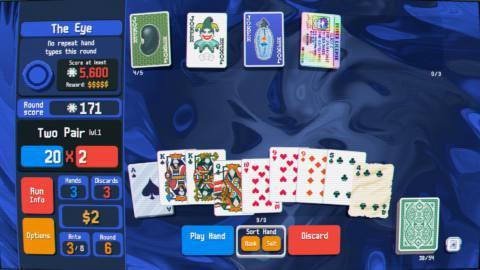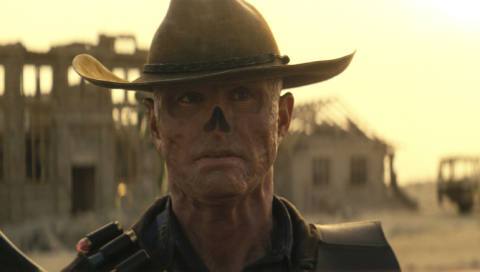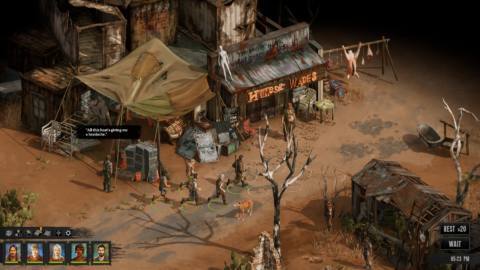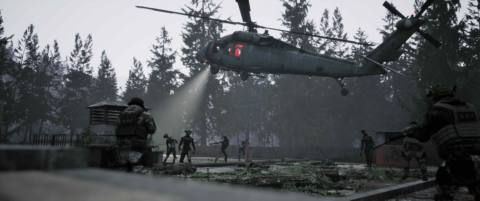When you frequent gaming circles on social media, there are certain topics that poke the “discourse bear.” You’ve probably been exposed to the carousel of phrases that inspire developers, journalists, influencers, and fans to chime in every few months with Thoughts (review scores, easy mode, yellow paint). Usually I find these pow wows safe to ignore as folks repeat the same reasonable points at each other, but I admit there’s one recurring topic that always rubs me the wrong way: game length, and how much we’re supposed to (not) care about it.
The topic goes back further than social media, but the first time I remember everyone having an opinion on price and length was Gone Home in 2013—a time when indie games had started to command a lot of respect in the industry, but before we’d gotten used to the idea of paying $20+ for story-heavy games that only last a couple of hours. A few years later, The Order 1886 sparked a few headlines defending its six-hour campaign at $60. Last year, our review of Ratchet & Clank: A Rift Apart caught some heat for highlighting its short runtime and premium price as a negative.
Holding game devs to a strict dollar/hour ratio is obviously not a sensible idea. That’s a recipe for mediocre videogames, and arguably the line of thinking that’s led to a generation of padded-out open world games that would’ve benefited from smaller maps and fewer crafting systems. It’s understandable that the most plugged-in videogame enjoyers emphasize artistry and meaning and think less about extracting value from a product.
And yet, I think about game length constantly. I can’t help it. Every time I hover over the Add to Cart button on Steam, I consider how long this $40, $60, or $70 game will last. I gravitate toward singleplayer games with lots of systems that take dozens of hours to explore to the fullest. I get giddy when replay value is baked into game design and entranced by competitive shooters with hundreds of hours of depth.
It’s not like I check every game’s HowLongtoBeat page before clicking buy, but when I put all my favorite genres in a lineup—immersive sims, stealth games, multiplayer FPSes, co-op shooters, open world action RPGs—clearly I appreciate a ravenous hours-eater. As good as they may be, I struggle more to justify picking up short adventure games with positive buzz like The Invincible ($30) or Indika ($25), and I’m tired of feeling sheepish about it.

The good kind of value
As much as I prefer to celebrate sexier accomplishments like The Invincible’s gorgeous planet or Indika’s blending of 2D and 3D horror, if I’m honest with myself, how much time I get out of a game is part of my calculus for how “good” it is. I think it is for a lot of people, whether we think about it in those terms or want to admit it.
Complaining that a game costs too much for its length is gauche, yet no one complains when a cheap game is praised for being a great value.
Complaining that a game costs too much for its length is gauche, yet no one complains when a cheap game is praised for being a great value. Every conversation about Vampire Survivors I’ve ever witnessed has, at some point, touched on how wild it is that the standout indie hit of 2022 was only $5. That goodwill has carried into positive reviews of its multiple expansions that commend Poncle for packing so much more game into $2.50 packages.
This year people are saying similar things about Helldivers 2, a $40 co-op shooter that’s refreshing simply for having a lot of meat on the bone at launch, and Balatro, the poker roguelite that consumed my entire month of June. Balatro is genius for a hundred reasons, but I remember reaching a new level of appreciation for it after hitting the 12 hour mark, discovering there were still dozens of Joker cards to unlock, and thinking, “All of this for $15?” Terraria has now offered 13 years of free updates for just $10.
Maybe my reluctance to pony up the dough for short games is really just an expression of preference for games made up of systems and rules, which can be entertaining forever, over ones that rely on writing, dialogue, and cutscenes enjoyed over an afternoon or two.

It’s a testament to PC gaming’s unmatched diversity that these entirely different approaches to videogames are in competition. The digital store where I bought Teardown, a one-of-a-kind puzzle sandbox game that I’ve had 70 hours of fun in, is the same store where I bought Immortality, a one-of-a-kind 6-hour mystery game, for the same price. I don’t regret picking up either, but as someone who’s eager to stretch my videogame budget as far possible, only one of those purchases felt like a steal.
Occasionally, a narrative game is so exceptional that hour count is the last thing on my mind: I picked up Disco Elysium for $40 on the back of buzz and now it’s in an exclusive club of games I’ve replayed three times.
Quantity is quality, at least sometimes. A great game that’s also cheap triggers the same rush I get when I find a killer deal on my favorite shampoo, like I’ve discovered some sort of capitalism loophole where good things can also be affordable. Rolling credits on an expensive game that kept me occupied for two days reminds me of why I don’t frequent the local sandwich shop that charges $17 for half subs that are good, but always leave me hungry. Of course, my partner loves that place because their sandwiches are just the right size for her. Such is the variety of human experience. If we’re going to think more of games that give us more than we paid for, it’s fair to be disappointed by ones that are smaller than we hoped.






